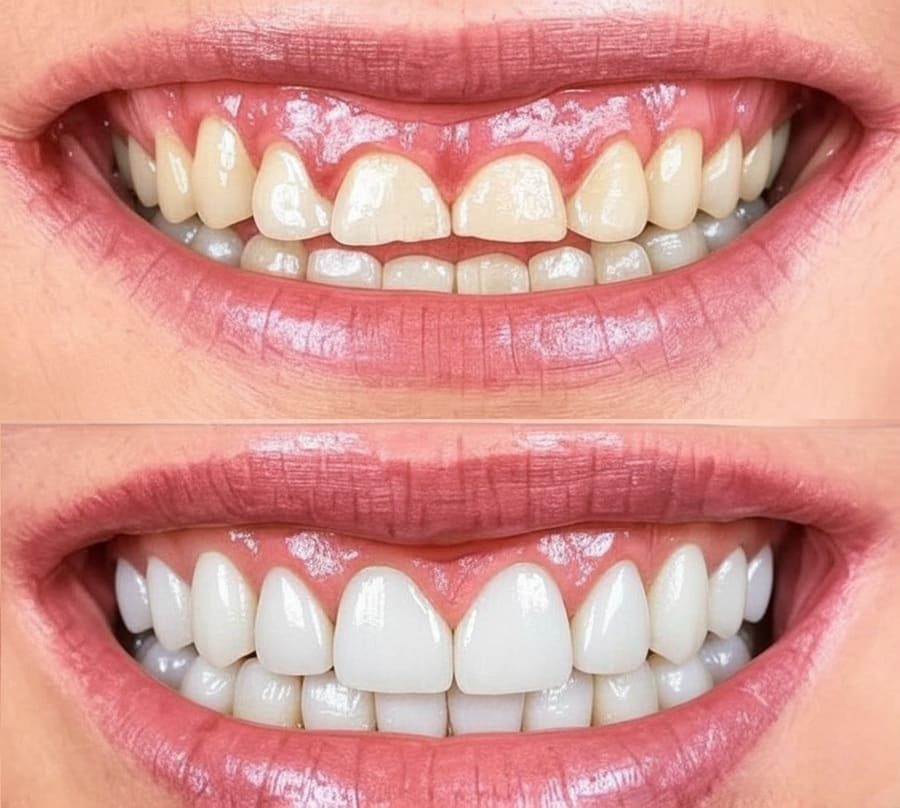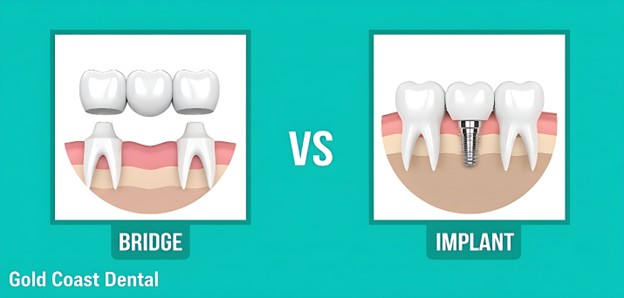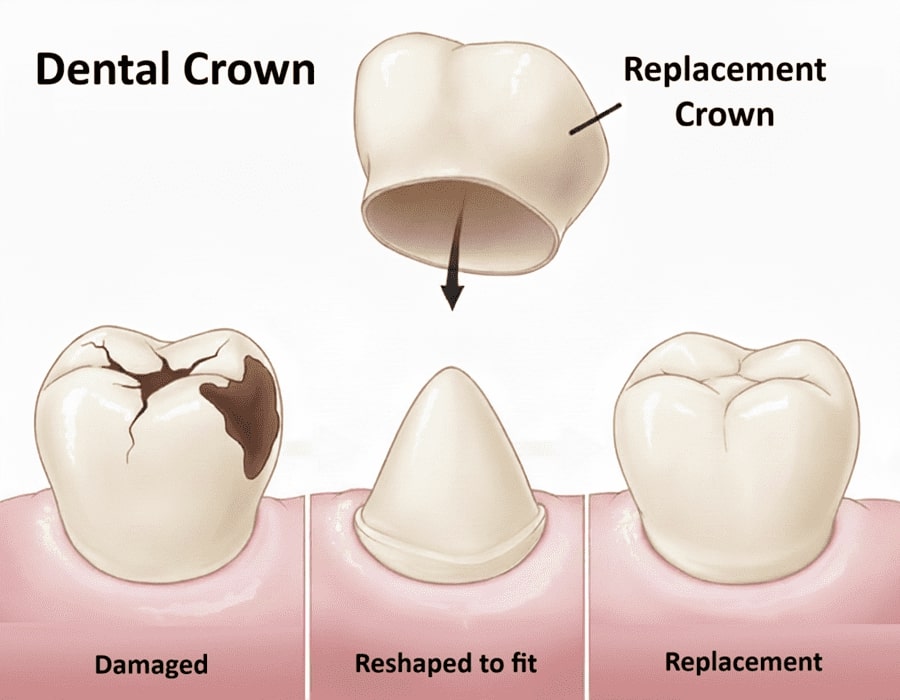Dental Crowns: Types, Costs, and How Long They Last

This article was medically reviewed by Diane Boval, DDS, a licensed dentist practicing in California.
Dental Crowns are a reliable way to rebuild weak or worn teeth while keeping your bite balanced. If you’re searching for a “dentist in La Habra” or “near me,” our team can help you plan care that fits your timeline and budget. You can also find your nearest location for a convenient visit.
Quick take:
- Crowns (also called a dental crown, tooth crown, or dental cap) cover and protect a damaged tooth.
- Common materials include porcelain, zirconia, porcelain‑fused‑to‑metal (PFM), gold, and resin.
- Typical life span: about 10–15 years for many patients; premium ceramics and gold can last longer with good care.
- Cost varies by material, tooth position, and insurance.
What is a dental crown?
A crown is a custom “cap” that fits over a prepared tooth to restore strength, shape, and appearance. It’s used when a filling would be too large, after a root canal, for cracked or worn teeth, or to improve shape and color. You may hear other names like tooth crown, crown for tooth, or ceramic teeth cap—all describe the same idea.
For bridge work, crowns can anchor replacement teeth on either side of a gap. Crowns also sit on top of implants as the visible tooth.
Why would I need a crown—and who is a good candidate?
- Cracked, chipped, or worn teeth: crowns hold the tooth together and restore chewing.
- Large fillings or root canal teeth: a full cover helps prevent breakage.
- Cosmetic concerns: for stained, misshapen, short, or crooked teeth when veneers or bonding aren’t ideal.
- Bridges: to replace a missing tooth when an implant isn’t planned.
Looking for treatment pages? See our service page on crowns & bridges for clinical details and booking. This article stays educational to avoid overlap.
How long do dental crowns last?
With steady home care and routine visits, many crowns last 10–15 years or longer. Studies report 5‑year survival around the mid‑90% range for both metal‑ceramic and many all‑ceramic options; long‑term results vary by material, bite forces, and hygiene habits.
How much does a dental crown cost?
Costs vary by material, tooth location, and insurance. Without insurance, many U.S. practices report ranges from roughly $800–$2,500+ per tooth. Porcelain and zirconia tend to sit in the middle to upper ranges; resin is lower; gold depends on market prices. If you’re budgeting, factor the price of a dental cap, any core build‑up, and whether you need a temporary or a same‑day option.
We’ll review a written estimate before you begin and discuss payment options. For plan coverage questions, see our blog for more guides or ask our team during your visit.
What happens during the dental crown procedure?
- Exam & planning: X‑rays or scans check the root and bite. We discuss goals and pick a material.
- Tooth preparation: the tooth is shaped and any decay or cracks are treated.
- Impression or scan: we capture the exact shape for the lab.
- Temporary crown: a short‑term cap for teeth protects your tooth while the lab makes the final crown.
- Fit & bond/cement: the final crown is adjusted for bite and secured.
What Are the Differences Between a Dental Crown, a Filling, and a Porcelain Veneer?
OptionCoversBest forLongevity & upkeepCrownEntire toothCracks, large decay, after root canal, heavy wear10–15+ yrs; floss/clean; avoid hard chewing on day oneVeneerFront surfaceShape, color, small chips or gaps10–15 yrs; avoid biting hard objects with front teethFillingLocal areaSmall to medium cavities5–10 yrs typical; consider onlays/inlays for larger areas
Curious about appearance upgrades? Explore our cosmetic dentistry resources for color and shape options without overlapping service pages.
Key Differences Between Dental Implants vs Crowns
A crown restores an existing tooth; an implant replaces a missing tooth with a titanium post and crown. If your tooth can be saved, a crown may be the simplest path; if it’s non‑restorable or missing, an implant can prevent bone loss at that spot. Read more about replacement options on our dental implants page.
Crowns, Bridges, and Partial Dentures—Which Restores Best?
How long do crowns last?
Many last a decade or more. Studies show strong 5‑year outcomes for both metal‑ceramic and several all‑ceramic systems. Bite forces, grinding, diet, and hygiene all affect life span. Night guards and regular cleanings help protect your investment.
How much is a dental crown (and what affects the price)?
- Material: zirconia and porcelain cost more than resin; gold varies with metals markets.
- Tooth position: molars often cost more than front teeth.
- Build‑ups & posts: add if the tooth needs extra support.
- Insurance benefits: many plans cover a portion; annual maximums apply.
For emergencies like a lost cap or broken crown, see our tips on the emergency dentistry page, including when temporary dental glue for crowns might be reasonable until you’re seen.
Disadvantages of dental crowns (and how to avoid problems)
- Sensitivity: common for a few days; call if it persists.
- Chipping of layered porcelain: choose monolithic zirconia in heavy bite areas.
- Gum irritation: daily flossing and great fit keep tissues calm.
- Replacement: crowns can wear or loosen over time; routine checkups catch early signs.
Dental crown procedure: step‑by‑step comfort
Most patients feel only gentle pressure with local anesthesia. If you feel nervous about dental care, ask about comfort options during your consult. Our goal is precise fit and a calm experience.
Care tips after a new crown
- Avoid very sticky or hard foods for the first day.
- Brush and floss normally; slide floss out sideways around a temporary.
- Use a night guard if you grind your teeth.
- Keep routine checkups—clean margins last longer.
Want a personalized plan? This article is educational. For treatment availability and scheduling, visit our service page for crowns & bridges or find your nearest location to talk with a dentist.
FAQ
What is a dental crown?
A custom cap that covers a tooth to restore shape, strength, and appearance. It’s used for large decay, cracks, after root canal, or for cosmetic shape and color.
How long do dental crowns last?
Many last 10–15 years or longer with steady care. Zirconia and gold often show strong long‑term results.
How much does a dental crown cost?
Without insurance, many practices quote about $800–$2,500+ per tooth depending on material and tooth location. We provide a written estimate before care.
Which types of dental crowns are available?
Porcelain, zirconia, PFM, gold, resin, and more. Your dentist picks based on strength, aesthetics, and bite.
Do crowns hurt?
Local anesthesia keeps you comfortable. Mild soreness is common for a day or two and settles quickly.
What’s the difference between a crown and a veneer?
A crown covers the whole tooth; a veneer covers the front surface only. Veneers are usually for cosmetics; crowns add strength too.
What about bridges vs implants?
A bridge uses crowns on neighbor teeth to fill a gap; an implant replaces the root and supports a crown. Each fits different goals and budgets.
References (APA)
Citations below support survival ranges, material choices, and cost context.
- Pjetursson, B. E., et al. (2007). A systematic review of the survival and complication rates of all‑ceramic and metal‑ceramic crowns. Journal of Prosthetic Dentistry. PubMed
- Sailer, I., et al. (2015). All‑ceramic or metal‑ceramic tooth‑supported fixed dental prostheses? Journal of Dental Research. PubMed
- Teichmann, M., et al. (2017). Ten‑year survival of lithium disilicate crowns. Journal of Dentistry. ScienceDirect
- AlMashaan, A., et al. (2022). Survival of complete coverage tooth‑retained FPDs: A review. Healthcare. PMC
- Silva, N. R. F. A., et al. (2011). Reliability of zirconia vs metal‑ceramic restorations. JADA. ScienceDirect
- Kassardjian, V., et al. (2016). Longevity of all‑ceramic full coverage restorations: Meta‑analysis. Journal of Dentistry. ScienceDirect
- Mark, A. M. (2021). Wearing a crown. JADA. JADA
- ADA. (2025). Materials for indirect restorations. American Dental Association. ADA
- MouthHealthy. (2025). Crowns. American Dental Association – MouthHealthy. Link
- CareCredit. (2024). Dental crown cost guide. CareCredit Well‑U. Link
- GoodRx. (2022). Dental crown cost. GoodRx Health. Link
- Pjetursson, B. E., et al. (2012). Survival of implant‑supported FDPs: Systematic review. Clinical Oral Implants Research. PubMed
Last reviewed October 2025.


